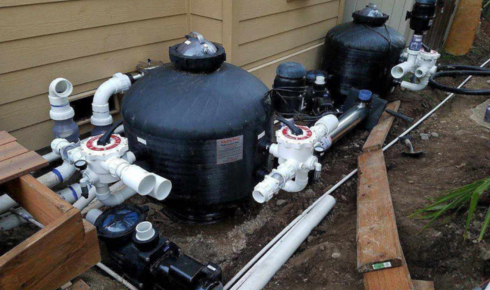There’s something hypnotic about a pond. The gentle ripple of water, the way sunlight dances across the surface, and the quiet presence of fish darting beneath the lily pads—it’s a little slice of serenity in a chaotic world. But, as any pond owner knows, maintaining that calm beauty takes more than occasional scooping of leaves or a mid-summer water change. The secret ingredient? A good filtration system. And for many hobbyists, a floating pond filter can be a game-changer.
I remember the first time I added one to my backyard pond. I’d always been diligent with netting leaves and trimming plants, but the water always seemed a little murky by mid-summer. Installing a floating filter felt almost magical. It drifted on the surface, quietly processing water, and within days, there was a visible difference. Fish were happier, algae seemed to retreat, and I finally got that crystal-clear pond I’d been dreaming of.
Why Pond Filtration Matters
Ponds are living ecosystems. They aren’t just a container of water—they host fish, plants, beneficial bacteria, and, sometimes unwelcome algae or debris. Without proper filtration, waste products accumulate. Fish excrement, uneaten food, and decaying plant matter release nutrients that algae love, and suddenly your peaceful pond looks more like a swamp.
A quality pond water filter works by removing these particles, breaking down harmful substances, and maintaining oxygen levels that are essential for fish and plants. While mechanical filtration captures visible debris, biological filtration supports beneficial bacteria that convert harmful ammonia into less toxic substances. Without this balance, a pond can quickly spiral into murky, unhealthy water.
Even small ponds benefit from filtration. It’s easy to underestimate how quickly water quality can decline. One cloudy weekend can turn into weeks of murky water if the ecosystem isn’t supported. That’s why choosing the right system for your pond size and fish population is so important.
Floating Pond Filters: Convenience Meets Effectiveness
Floating pond filters have a unique appeal because they combine practicality with performance. Unlike fixed filters that require careful placement and plumbing, a floating pond filter drifts across the water’s surface, naturally circulating and filtering water in a wider area. They’re perfect for ponds where you want minimal intrusion into the aesthetics or for those who prefer low-maintenance solutions.
These filters typically combine mechanical and biological filtration in a single unit. Debris is trapped in the media, while bacteria work to break down toxins. Some units also feature surface skimmers that remove floating debris before it sinks to the bottom, which is particularly useful in autumn when leaves are falling.
For pond owners who value simplicity, floating filters are a practical choice. You don’t have to worry about digging trenches or hiding pump lines. The filter does its work quietly and efficiently, letting you enjoy the pond rather than constantly managing it.
Timing and Importance of Pond Filter Replacement
Like any mechanical system, pond filters don’t last forever. Over time, debris accumulates, biological media becomes saturated, and flow rates can drop. This is where pond filter replacement becomes essential. Neglecting to replace a filter can undo all the hard work you’ve put into keeping your pond clean, leading to cloudy water, algae blooms, and stressed fish.
Replacing a filter doesn’t need to be complicated. Some systems are as simple as swapping out a cartridge, while others require rinsing or replacing specific filter media. The key is monitoring your pond regularly. If water clarity diminishes, flow slows, or unpleasant odors develop, it’s a sign that your filter may be past its prime. Timely replacement ensures that your pond’s ecosystem remains healthy and vibrant.
Even experienced pond owners sometimes underestimate the frequency of replacement. Factors like fish load, pond size, and seasonal debris can all influence how often a filter needs attention. A good rule of thumb is to check mechanical media monthly and biological media a few times per season, adjusting as necessary.
Tips for Maintaining Your Pond System
Proper maintenance extends beyond replacing filters. Here are some practical steps to keep your pond and filtration system running smoothly:
- Regular Debris Removal – Skim floating leaves and plant matter to reduce the load on your filter.
- Monitor Fish Population – Overstocking can overwhelm a filter, leading to poor water quality.
- Check Water Chemistry – Test pH, ammonia, nitrite, and nitrate levels periodically. Balanced water supports fish and plants while keeping algae in check.
- Seasonal Adjustments – In colder months, flow rates may be reduced, and pumps may require winterization depending on your climate.
- Rinse Mechanical Media – Regularly cleaning or lightly rinsing filter pads prevents clogging without disturbing beneficial bacteria.
These small actions, combined with timely pond filter replacement, can prevent many common water problems and reduce the amount of reactive maintenance required.
Choosing the Right Pond Filter
Not all pond filters are created equal. Factors to consider include pond size, fish population, and whether you want a submerged, external, or floating system. Floating units are particularly attractive for smaller to medium ponds or for those who want a system that integrates seamlessly with the pond’s aesthetic.
It’s also worth considering multi-stage filtration units that combine mechanical, biological, and chemical filtration. While floating filters excel at simplicity and ease of use, a combination system may be necessary for larger or heavily stocked ponds. Consulting with a pond specialist or reviewing manufacturer recommendations ensures you choose a system that matches your needs and pond conditions.
The Environmental and Aesthetic Impact
A well-maintained pond does more than look beautiful—it fosters a miniature ecosystem. Clear water encourages plant growth, supports healthy fish populations, and reduces algae dominance. For anyone who enjoys photography, meditation, or simply a peaceful backyard retreat, this can be invaluable.
From an environmental perspective, proper filtration reduces the need for chemical additives, which can harm beneficial pond organisms and disrupt the ecosystem. A floating filter, combined with regular pond filter replacement, keeps the system naturally balanced, allowing plants, fish, and microorganisms to thrive.
When to Upgrade
Even the best filter can eventually become outdated. If you notice persistent cloudiness, algae blooms, or a decline in fish health despite regular maintenance, it may be time to upgrade. Modern systems often feature improved flow rates, larger biological media chambers, and energy-efficient pumps.
Upgrading doesn’t mean discarding your old system immediately. Often, existing units can continue functioning as secondary filtration or for smaller ponds, while a new system takes over primary filtration duties. This layered approach can maximize water clarity and minimize the stress on aquatic life.
Final Thoughts
A pond is more than just water in a backyard—it’s a living, breathing ecosystem that requires attention, care, and the right technology to flourish. Whether you’re a first-time pond owner or a seasoned enthusiast, investing in filtration pays off in water clarity, healthier fish, and a more serene backyard environment.
For many, the simplicity of a floating pond filter is unbeatable, providing effective circulation and filtration without complicated installation. Regular pond filter replacement ensures that mechanical and biological media continue to perform at their best. And by using a high-quality pond water filter, you support the delicate balance of the pond ecosystem, keeping algae under control and creating an inviting environment for both wildlife and people.
With a little planning, ongoing maintenance, and attention to filter health, your pond can remain a sparkling, vibrant centerpiece in your yard. In the end, it’s not just about clean water—it’s about creating a living, breathing sanctuary that brings peace, joy, and natural beauty to your daily life

